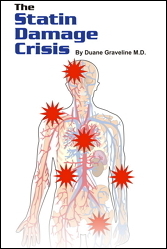Aging and Lecithin

Lecithin is a phospholipid found primarily in egg yolks and soy. Of all the phospholipids, phosphatidylcholine is singularly the most important. The powerful, even miraculous, reports of extensive studies over the past several decades in the U.S.A. and in Europe have established a firm understanding of its relationship to aging and diseases of old age.
Of the tens of thousands of molecules that make up the life of a cell, phosphatidylcholine stands apart as the major component of the membrane, the structural skin that surrounds the cell as well as the tiny organelles within it. But it is far more than an outside protective layer - it is literally the essence of life.
Cellular membranes are bi-lipid layers of opposing phospholipids lined up soldier fashion that automatically organize themselves in a spherical shape to provide the protective outer cover. Within this membrane sits a huge selection of ion channels and receptors from our genetic library that literally control our entire existence.
Some 70% of these phospholipid molecules are essential fatty acids and must be derived from diet. This last sentence is of utmost importance in the search for nutritional supplements appropriate for mitochondrial maintenance. These fatty acids are essential, meaning the only source is dietary.
Humans, with their cosmopolitan tastes, appear to exist comfortably while dining primarily upon whale blubber and seal meat in one part of the world to bovine blood and meat in another, while those of European heritage exist on a modern diet despite a paleolithic diet only 12,000 years behind us.
As one becomes familiar with the complex inter-relationships of this vast membraneous world, it is truly amazing how adaptable we are from a dietary viewpoint.
Four phospholipids make up this incredible membrane: Choline (PC), Ethanolamine (PE), Serine (PS), and Inositol (PI). This structural skin surrounds the cell as well as the tiny organelles within it. But it is far more than an outside protective layer. It appears to carry the very essence of life.
Phosphatidylcholine (PC) stands apart in this as possibly the most important molecule in the membrane and its extent is truly extraordinary. The membrane is the lining of every nerve cell that carries signals.
Stop there for just a second and let that sink in - the lining of every nerve cell - our entire nervous system, is dependent upon this membrane! I have been in medicine my entire life but I have trouble comprehending the scope of this membrane world and this is only the beginning of its true scope for it also is critical to energy production.
Imagine the mitochondria in every cell of the human body, the sole purpose of which is to provide energy in the form of adenosine triphosphate (ATP). Without the double membrane structure there could be no separation of electrical charge in the mitochondria and, hence, no possibility of ATP energy formation.
From cell wall, to nerve to mitochondria exists this system we take for granted, so vast as to be immeasurable and yet all dependent upon dietary supplementation of essential fatty acids to be operational.
With its water loving head (hydrophilic) and dry double tails (hydrophobic) the structure of a phospholipid molecule is truly a marvel. This configuration forces the oil loving tails to self assemble into a back to back configuration while the water loving heads constantly assemble to face the watery interiors of the cells.
Now we must recall that within the membrane sits a huge selection of ion channels, peptides and receptors quietly carrying out an immense array of life functions. Every part of the phospholipid membrane is critical but it is the makeup of the tails that stands out. The lipid tails comprise about 70% of the total phospholipid molecule and are critical to its function.
A large percentage of those lipid tails are essential fatty acids (EFAs), meaning that they must be part of the diet. Each of our cells can produce many of the lipid constituents of the tails, such as saturated (palmitic and stearic acids) and monounsaturated (oleic and nervonic acids), but not the omega 6s or the omega 3s.
Those two lipid families make up the EFAs, the Essential Fatty Acids, and their ratio is critical. A large number of researchers have determined that 4:1 is the ideal dietary ratio; that is, four parts omega 6 for every one part of omega 3. The ratio in the typical American diet is closer to 20:1.
Phosphatidylcholine has been studied extensively in Europe with many reports of impressive benefits. Not only has the absolute power of PC been demonstrated in many studies but the absolute necessity of this supplement has been demonstrated again and again.
Duane Graveline MD MPH
Former USAF Flight Surgeon
Former NASA Astronaut
Retired Family Doctor
Updated December 2015






